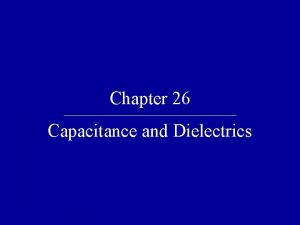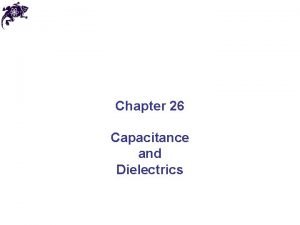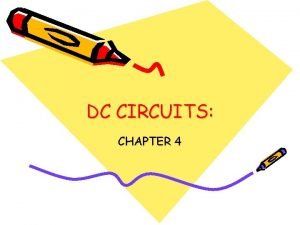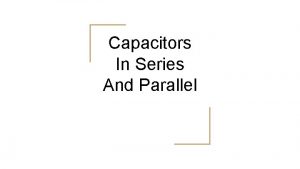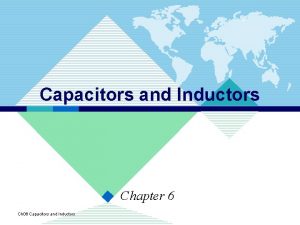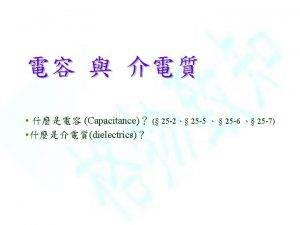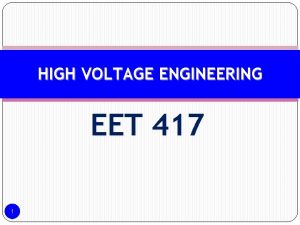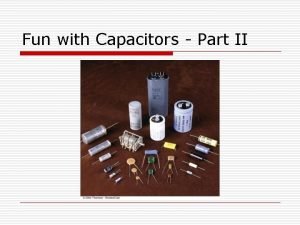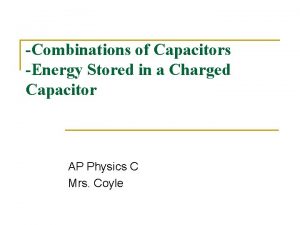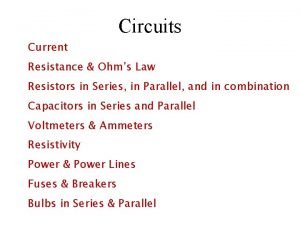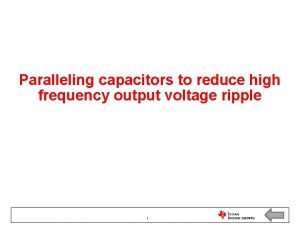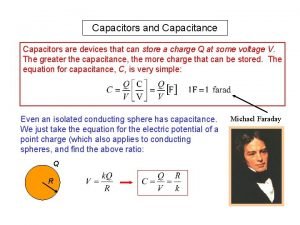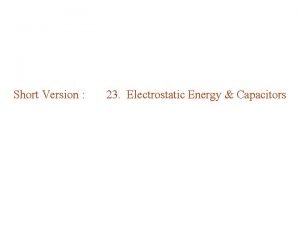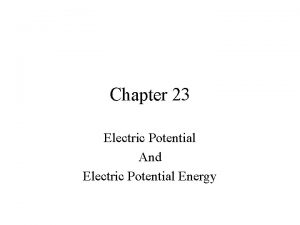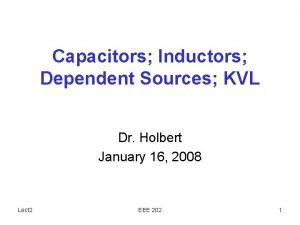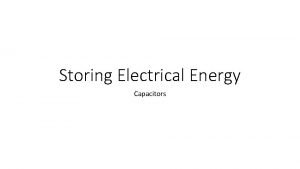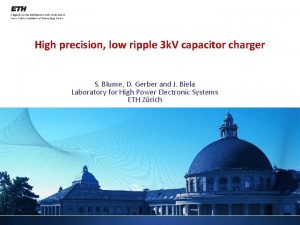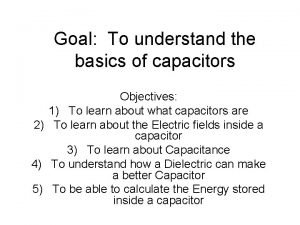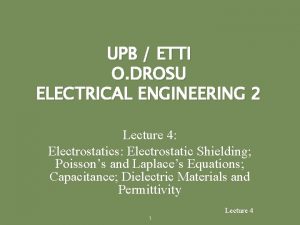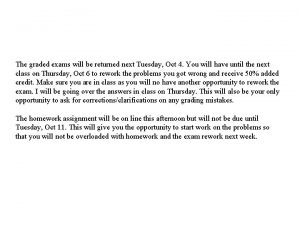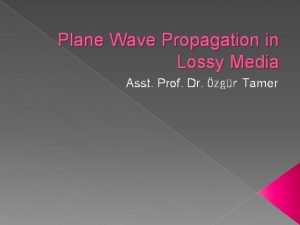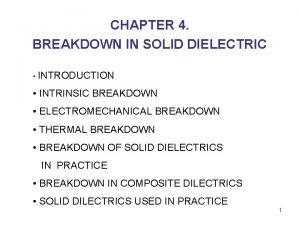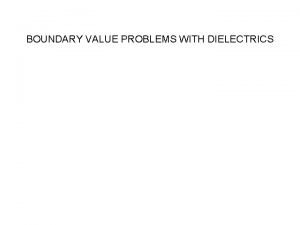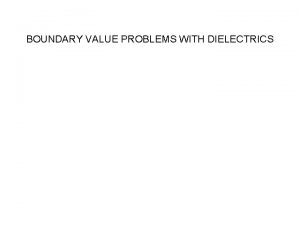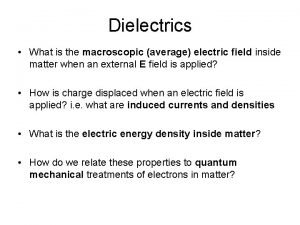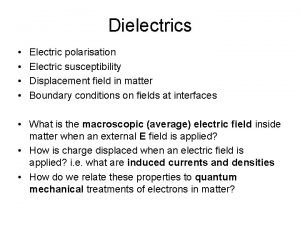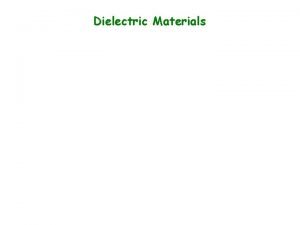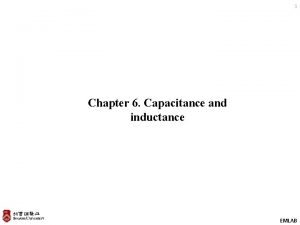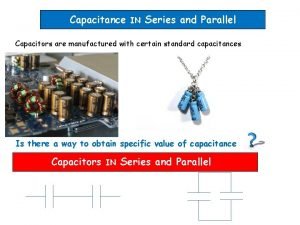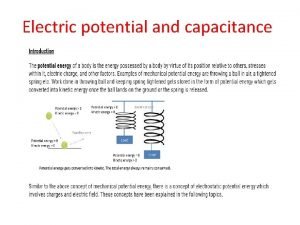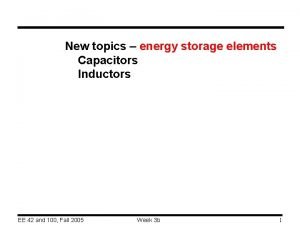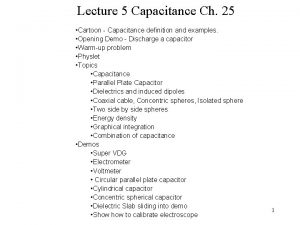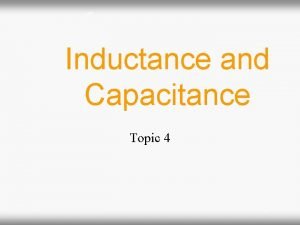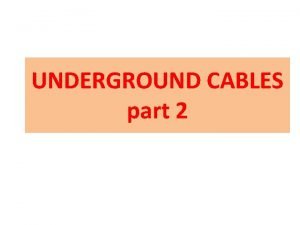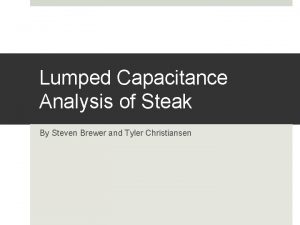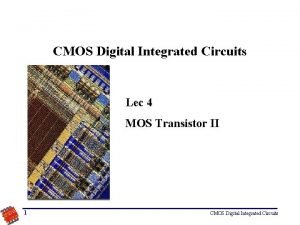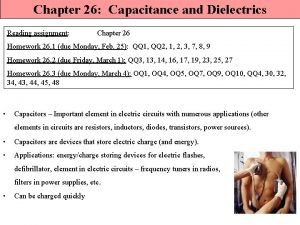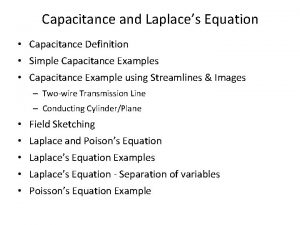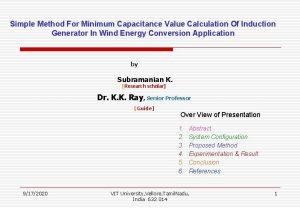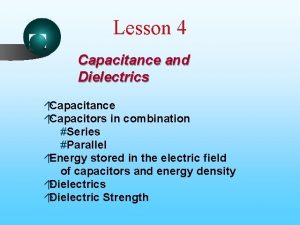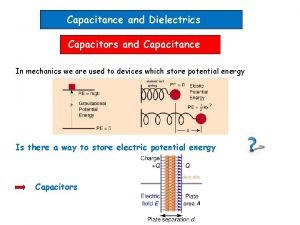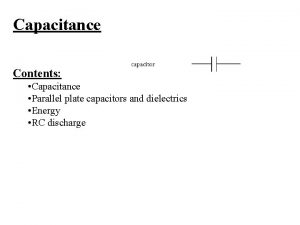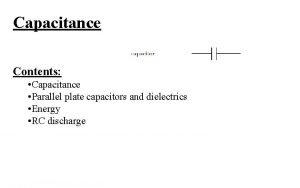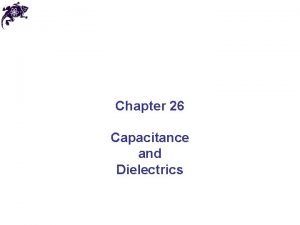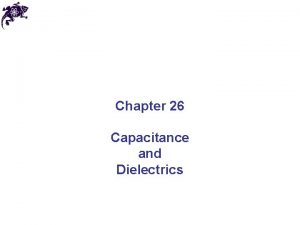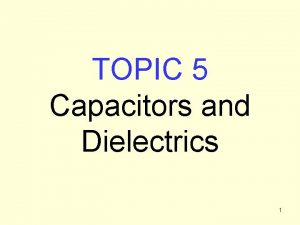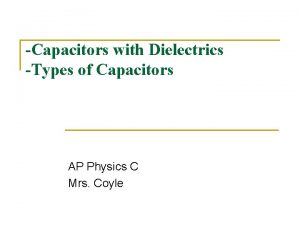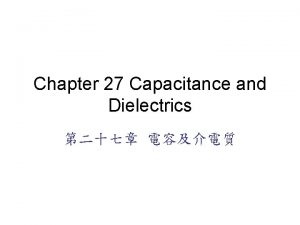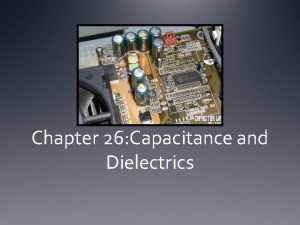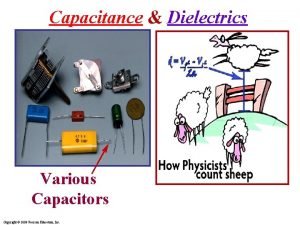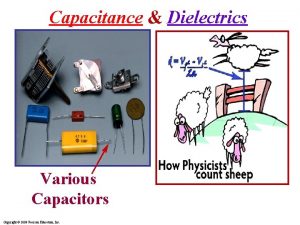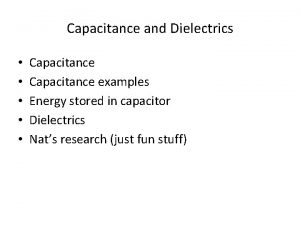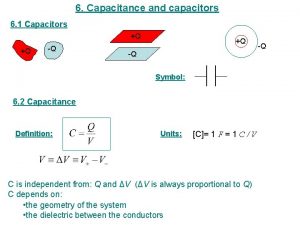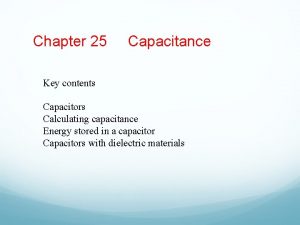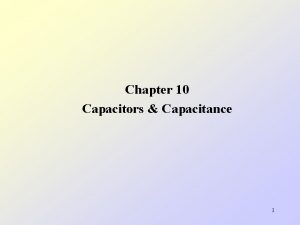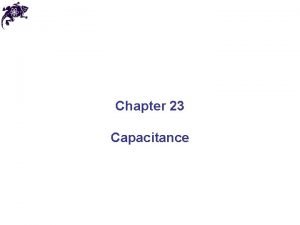Lesson 4 Capacitance and Dielectrics Capacitance Capacitors in











































- Slides: 43

Lesson 4 Capacitance and Dielectrics áCapacitance áCapacitors in combination #Series #Parallel áEnergy stored in the electric field of capacitors and energy density áDielectrics áDielectric Strength

conductor in electrostatic equilibrium Area A 1 E charge = 1

E Charged Plates d + -

PD between Plates áPotential drops Ed in going from + to - áV- is Ed lower than V+

Work Done in Moving Charge �ow does one make such a H separation of charge? Must move positive charge � Work is done on positive charge in � producing separation +Q F Q -Q

Electric Field áWhat forms when we have separation of charge? áAn Electric Field +Q E -Q

áThe work done on separating charges to fixed positions áis stored as potential energy áin this electric field, which can thus DO work áThis arrangement is called a Capacitorb CAPACITOR

Moving Charge áHow do we move charge? áWith an electric field áalong a conduction path

Picture

Charge Separation áThe charge separation is maintained áby removing the conduction path áonce a charge separation has been produced

Capacitor Symbol

Battery Symbol + -

Can charge Capacitor a capacitor by Charging

áPlates are conductors Capacitance áEquipotential surfaces áLet V = P. D. (potential difference) between plates áQ (charge on plates) ~ V áThus Q = CV áC is a constant, CAPACITANCE

SI Units

Calculation of Capacitance áassume charge Q on plates ácalculate E between plates using Gauss’ Law áFrom E calculate V áThen use C = Q/V

Capacitors

Electric Field above Plates

going from positive to negative plate Calculating Capacitance in General DV = V V = - E · ds £ 0 f f ò i i E · d s ³ 0 choose path from + plate to - plate D V = - V ( PD across plates ) Thus V = ò - Eds (choose path + e 0 EA C = - ò + Eds || to electric field )

for Parallel Plates Capacitor - +

for Cylindrical Capacitor Q 2 pe 0 L = C = æ bö V ln ç ÷ è aø • a = radius of inner cylinder • b = radius of outer cylinder • L = length of cylinder

Combinations of Capacitors in equilibrium áParallel #same electric potential felt by each element áSeries #electric potential felt by the combination is theof sum of the Combination Capacitors potentials across each element Parallel

Picture

Calculation of Effective Capacitance

Combination of Capacitors Series

Net charge zero Picture Why are the charges on the plates of equal magnitude ?

áIf net charge inside these Gaussian surfaces is not zero áField lines pass through the surfaces áand cause charge to flow áThen we do have not equilibrium Calculation of Effective Capacitance I

Calculation of Effective Capacitance II

Is this parallel or series? = Question I

Is this parallel or series? + - Question II + -

Thus capacitors are in parallel Answer

Work done in charging capacitor + - in Charging Work. I Done q Capacitor + -

Calculation

Energy Density

Dielectrics

Picture

Picture

Picture Polarization

Polarization Induced Electric Field

Dielectric Constant

Permitivity

Permitivity in Dielectrics

Dielectric Strength ·The Dielectric Strength of a non conducting material is the value of the Electric Field that causes it to be a conductor. ·When dielectric strength of air is surpassed we get lightning
 Capacitance and dielectrics quiz
Capacitance and dielectrics quiz Capacitance and dielectrics
Capacitance and dielectrics Inductor in dc circuit
Inductor in dc circuit Charge of capacitor in series
Charge of capacitor in series Capacitors and inductors
Capacitors and inductors Polar and non polar dielectrics
Polar and non polar dielectrics Classification of liquid dielectrics
Classification of liquid dielectrics Treeing and tracking in solid dielectrics
Treeing and tracking in solid dielectrics Fun with capacitors
Fun with capacitors Energy stored in parallel plate capacitor
Energy stored in parallel plate capacitor Si unit for ohm
Si unit for ohm Paralleling capacitors
Paralleling capacitors Capacitance
Capacitance Electrostatic energy density
Electrostatic energy density Energy stored in capacitors
Energy stored in capacitors “zero sum” voltage loop rule
“zero sum” voltage loop rule Energy in capacitors
Energy in capacitors High precision capacitors
High precision capacitors The basics of capacitors
The basics of capacitors Differential form of gauss law
Differential form of gauss law Derive gauss law in dielectric medium
Derive gauss law in dielectric medium Attenuation constant formula
Attenuation constant formula Dielectrics have free electrons
Dielectrics have free electrons Solid dielectric materials
Solid dielectric materials Boundary
Boundary Boundary value problems with dielectrics
Boundary value problems with dielectrics Normaldand
Normaldand Electric susceptibility formula
Electric susceptibility formula What are dielectric material
What are dielectric material Inductance energy
Inductance energy Inductance and capacitance formula
Inductance and capacitance formula Capacitance in series and parallel
Capacitance in series and parallel Hubungan kapasitor dengan muatan dan tegangan
Hubungan kapasitor dengan muatan dan tegangan Potential and capacitance
Potential and capacitance Energy storage elements
Energy storage elements The equivalent capacitance between a and b is
The equivalent capacitance between a and b is Relationship between capacitance and inductance
Relationship between capacitance and inductance Dielectric stress in a single core cable
Dielectric stress in a single core cable Lumped capacitance method
Lumped capacitance method Electric potential and electric field equation
Electric potential and electric field equation Short channel effects in mosfet
Short channel effects in mosfet Capacitor reading
Capacitor reading Equation for capacitance of a capacitor
Equation for capacitance of a capacitor Minimum capacitance formula
Minimum capacitance formula
